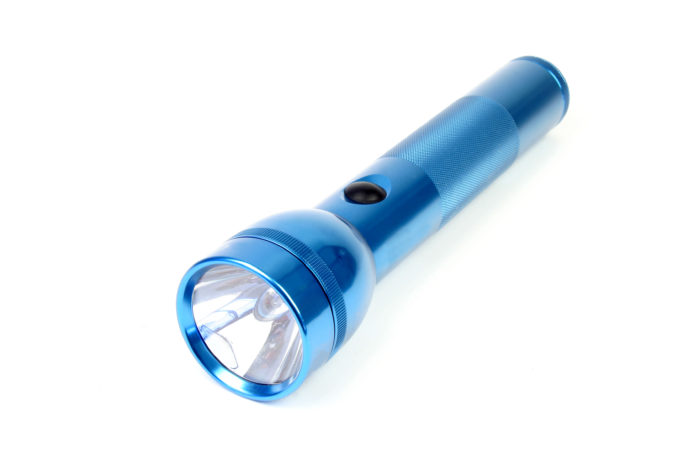
Chip Seibert, Managing Director, and Co-founder, at Kilowatt Labs
If you spend any time researching microgrids, you quickly realize how important energy storage is to the equation. We asked Larry (Chip) Seibert, of Kilowatt Labs to share his knowledge on the subject. Kilowatt Labs, based in New York City, is the developer of the world’s first supercapacitor-based energy storage system, Sirius Energy Storage. As a co-founder and managing director, Chip brings nearly 30 years of experience from the financial industry that includes work in the public, private, and startup markets. Additionally, he has founded, invested in, and managed numerous early-stage companies in the technology and healthcare industries.
Whether or not you believe we are at a critical point in our existence here on earth, there are very good reasons to aggressively move toward cleaner power generation and more efficiency overall in our energy delivery systems. Better power management and energy storage are critical to this effort not just because renewable energy is intermittent in its production, but also because these systems are based upon old and inefficient methods that are ripe for improvement.
The energy sector is enormous, at just under 10% of worldwide GDP. Within this footprint, stationary applications account for approximately 75% of consumption, while mobile applications—such as vehicles and consumer devices—comprise the balance. Less than 2% (EIA 2018) of the energy produced in the U.S. comes from solar generation. Roughly 17% of generation is from renewable sources, but most of this is produced from wind and hydropower. Despite decades of time and effort spent trying to move the U.S. toward solar energy, the results to date can only be seen as disappointing. Upon close inspection, the reason for this lackluster adoption is quite simple: thus far, solar generation has not been effective or economical.
Why is this the case? Large solar deals, after all, are now getting done at prices in the pennies per kilowatt hour. What is less understood is that virtually all solar generation today is what’s referred to as “grid-tied,” meaning that as cheap as this solar generation might be, there is an army’s worth of infrastructure that is required to allow that generation to actually be used effectively by consumers. Even once this is accomplished and about 20% of the energy injected into a grid is renewable, the grid begins to become unstable due to its inability to manage the intermittent nature of this generation.
The solution to this problem is more effective power electronics and better energy storage. The current excitement surrounding energy storage has increased apace with the emergence of more and better options in this area. While energy storage in the form of batteries has been around for more than a century, these electrochemical devices have suffered from several key shortcomings that have limited their wide deployment within both stationary and mobile applications. First, even when maintained under perfect conditions, they do not last long enough and require replacement within an unacceptably short period of time. Disposal of used batteries is difficult and costly: the batteries themselves are bulky and contain toxic materials that must be disposed of carefully and properly, which, unfortunately, many would argue happens far too infrequently, meaning that these batteries are ultimately contributing to significant environmental damage.
Further, due to their chemical nature, they are inefficient and potentially dangerous when charged or discharged too rapidly. They are limited by control systems that force the charge and discharge rates to exceed several hours or more. While this feature is a limiting factor even for grid storage applications, consumers, in particular, do not want to wait while charging vehicles or devices. This inefficiency results in the creation of heat both during charging and discharging, resulting in a loss of energy which, over time, adds up to a significant cost and the potential for permanent damage to the battery.
 In short, what we need is a better energy storage technology that enables a flexible range of charging and discharging speeds, provides very long product life, contains less toxic materials, provides a higher level of safety, enables acceptably high energy density, and finally, provides these features at an attractive price point. At Kilowatt Labs, we did not begin our journey with a search for better energy storage technology. As experts in electronics, we began by asking ourselves what was the biggest problem we could think of that could be solved with electronics. The task at hand, we believed, was to provide products that enabled the movement from fossil fuel-based energy generation and transportation systems to electrical systems. Solving this problem required the development of power management systems that enabled a small system to be truly independent—a “utility in a box” if you will. With generation and some form of energy storage, our “energy server,” aptly named the Centauri Energy Server, was capable of performing all the functions of the grid in a smaller, islanded (off-grid) setting. These systems were set up in places where there was no grid and while they were capable and efficient, they required the use of an energy storage system to provide energy during non-generation times. Unfortunately, the battery systems that were available at the time (mostly lead acid) were woefully inadequate for the hot climate in which they were installed and failed in many cases within a year.
In short, what we need is a better energy storage technology that enables a flexible range of charging and discharging speeds, provides very long product life, contains less toxic materials, provides a higher level of safety, enables acceptably high energy density, and finally, provides these features at an attractive price point. At Kilowatt Labs, we did not begin our journey with a search for better energy storage technology. As experts in electronics, we began by asking ourselves what was the biggest problem we could think of that could be solved with electronics. The task at hand, we believed, was to provide products that enabled the movement from fossil fuel-based energy generation and transportation systems to electrical systems. Solving this problem required the development of power management systems that enabled a small system to be truly independent—a “utility in a box” if you will. With generation and some form of energy storage, our “energy server,” aptly named the Centauri Energy Server, was capable of performing all the functions of the grid in a smaller, islanded (off-grid) setting. These systems were set up in places where there was no grid and while they were capable and efficient, they required the use of an energy storage system to provide energy during non-generation times. Unfortunately, the battery systems that were available at the time (mostly lead acid) were woefully inadequate for the hot climate in which they were installed and failed in many cases within a year.
We quickly recognized that all electrochemical energy storage systems would suffer a similar fate and began a development effort focused around a device that had been in existence even longer than batteries: the capacitor. These devices had been used in a narrow range of applications focused on rapid charging and discharging of electrical energy. They are known to have a very long life due to that fact that they are electrostatic devices, thereby storing electrical energy as electrical energy. This method has the benefit of producing little to no energy loss in the form of heat, thereby also offering high efficiency.
Capacitors, now larger and known as supercapacitors, have three well-known properties that have made them less useful in longer-duration energy storage applications. First, they are low voltage devices that are extremely difficult to control in parallel and series configurations necessary to achieve meaningful scale. Second, they tend to leak energy and, if fully charged and left alone, will be depleted within several days. Third, they tend to exhibit what is known as a linear discharge curve. This simply means that they essentially discharge all their stored energy at once and are not useful for any kind of extended use applications. Finally, typical supercapacitor densities are simply not acceptable, even for stationary applications where the demands on space are less than for consumer applications.
We overcame the first three challenges with extremely fast control electronics, which allowed the ability to scale solutions into the megawatt hours and match the discharge to any load. We developed special circuitry to address the leakage problem, resulting in self-discharge rates similar to that of modern chemical batteries. Finally, we were able to work with several materials providers to increase the density of our capacitors, allowing our energy storage systems to rival that of batteries in terms of size and weight.
When combined, our energy server, the Centauri, and our supercapacitor-based energy storage, Sirius, create a system that can provide high-quality power where there is none. These products can also provide bi-directional services within the grid in a long-lasting, flexible, safer, less toxic package than current chemical storage systems. Here in the U.S. and in other developed countries, energy generation and delivery systems are quite robust, but this is not the case in much of the rest of the world. South Africa, for instance, is currently experiencing rolling brown/black-outs. Where there is no power grid at all, there are fewer options, and up until now, none of these have been particularly attractive. Even in these most remote conditions, where there is no grid, our two technologies can provide the solution. Together, our power management and energy storage products have the ability to optimize any set of generation sources and can fully handle the requirements of the load without reliance on the grid.
Where there is a grid, things work better. But there are two distinct problems with the grid. First, fossil fuel generation most would agree, is problematic. Given the choice, cleaner generation would be preferred. Second, the now 100-year-old grid technology is quite inefficient. This is because 1) upgrades involve large infrastructure projects that must take into account the next several decades of use, and 2) the nature of the delivery system results in end users generally having more capacity than they can use outside the brief periods during which they might need it. While quite robust, these massively over-built systems present an opportunity ripe for change.
Despite these challenges, the utility companies are still the experts at operating these incredibly complex and impressive systems. Most do not realize that the power coming out of an outlet has only an instant ago been generated in response to the aggregate demand in the marketplace. Supply is adjusted up and down moment by moment as necessary and must be kept exactly in balance with demand or the system will crash. This is a complex and impressive job that happens every second of every day. When it becomes impossible, as is currently too frequently the case in places like South Africa, outages ensue.
We continue to have a great deal of respect for the electric utility companies and believe the much-anticipated electric utility “death spiral” is unlikely to occur. Remember the famous Willie Sutton quote, when asked why he robbed banks: “Because that’s where the money is.” These companies have a century of acquired expertise, substantial existing infrastructure, ready access to capital, and all the customers. The rapid and necessary change will not occur in opposition to the electric utility companies. The effort to upgrade the energy infrastructure currently implemented around the globe will require a serious, collaborative effort by everyone. At Kilowatt Labs we believe that we have a significant contribution to make and look forward to working with others to move the world’s energy infrastructure forward to truly be the grid of the future.



